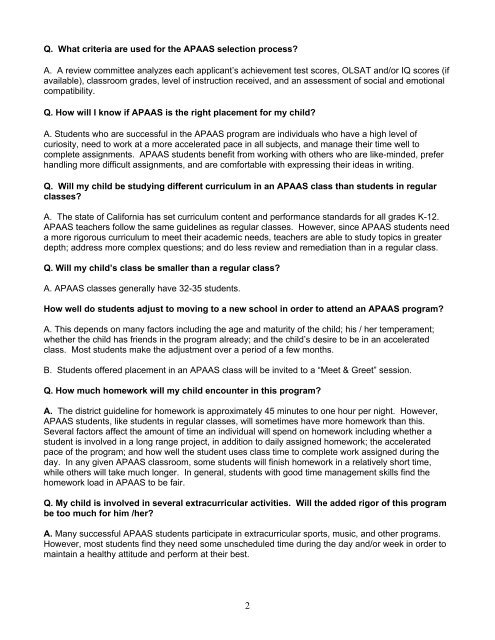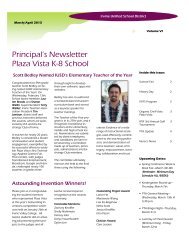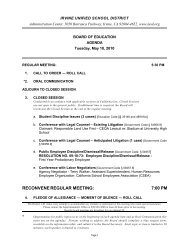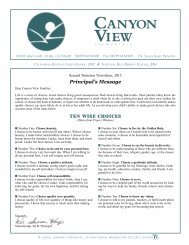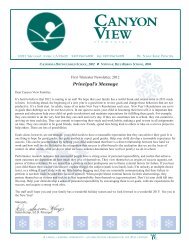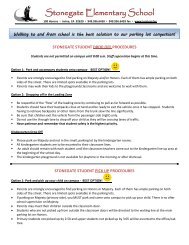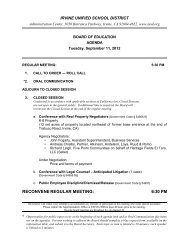FAQ GATE/APAAS - Irvine Unified School District
FAQ GATE/APAAS - Irvine Unified School District
FAQ GATE/APAAS - Irvine Unified School District
Create successful ePaper yourself
Turn your PDF publications into a flip-book with our unique Google optimized e-Paper software.
Q. What criteria are used for the <strong>APAAS</strong> selection process?<br />
A. A review committee analyzes each applicant’s achievement test scores, OLSAT and/or IQ scores (if<br />
available), classroom grades, level of instruction received, and an assessment of social and emotional<br />
compatibility.<br />
Q. How will I know if <strong>APAAS</strong> is the right placement for my child?<br />
A. Students who are successful in the <strong>APAAS</strong> program are individuals who have a high level of<br />
curiosity, need to work at a more accelerated pace in all subjects, and manage their time well to<br />
complete assignments. <strong>APAAS</strong> students benefit from working with others who are like-minded, prefer<br />
handling more difficult assignments, and are comfortable with expressing their ideas in writing.<br />
Q. Will my child be studying different curriculum in an <strong>APAAS</strong> class than students in regular<br />
classes?<br />
A. The state of California has set curriculum content and performance standards for all grades K-12.<br />
<strong>APAAS</strong> teachers follow the same guidelines as regular classes. However, since <strong>APAAS</strong> students need<br />
a more rigorous curriculum to meet their academic needs, teachers are able to study topics in greater<br />
depth; address more complex questions; and do less review and remediation than in a regular class.<br />
Q. Will my child’s class be smaller than a regular class?<br />
A. <strong>APAAS</strong> classes generally have 32-35 students.<br />
How well do students adjust to moving to a new school in order to attend an <strong>APAAS</strong> program?<br />
A. This depends on many factors including the age and maturity of the child; his / her temperament;<br />
whether the child has friends in the program already; and the child’s desire to be in an accelerated<br />
class. Most students make the adjustment over a period of a few months.<br />
B. Students offered placement in an <strong>APAAS</strong> class will be invited to a “Meet & Greet” session.<br />
Q. How much homework will my child encounter in this program?<br />
A. The district guideline for homework is approximately 45 minutes to one hour per night. However,<br />
<strong>APAAS</strong> students, like students in regular classes, will sometimes have more homework than this.<br />
Several factors affect the amount of time an individual will spend on homework including whether a<br />
student is involved in a long range project, in addition to daily assigned homework; the accelerated<br />
pace of the program; and how well the student uses class time to complete work assigned during the<br />
day. In any given <strong>APAAS</strong> classroom, some students will finish homework in a relatively short time,<br />
while others will take much longer. In general, students with good time management skills find the<br />
homework load in <strong>APAAS</strong> to be fair.<br />
Q. My child is involved in several extracurricular activities. Will the added rigor of this program<br />
be too much for him /her?<br />
A. Many successful <strong>APAAS</strong> students participate in extracurricular sports, music, and other programs.<br />
However, most students find they need some unscheduled time during the day and/or week in order to<br />
maintain a healthy attitude and perform at their best.<br />
2


